Trade businesses are some of the most difficult to start up. It’s not that there isn’t a demand for these businesses, it’s just the fact that choosing new people to work with or hire for certain jobs can be nerve wrecking for people. It’s completely understandable, but it means that trade businesses have it a Read more
Whats New

Trade businesses are some of the most difficult to start up. It’s not that there isn’t a demand for these businesses, it’s just the fact that choosing new people to work with or hire for certain jobs can be nerve wrecking for people. It’s completely understandable, but it means that trade businesses have it a little more difficult than others. So,
Giving Away Little Freebies
One of the things that you should be doing is giving away little freebies from your business when you have successfully completed a job. It can be little things like a pen, or some die cut stickers for example just so that they remember you in the future. They’re nothing fancy and nothing expensive, but the goal is to stay in the memory of those people who you have worked for. Hopefully, they will then remember you in the future, recommend you to others who may need your services, and call you back when they need help themselves.
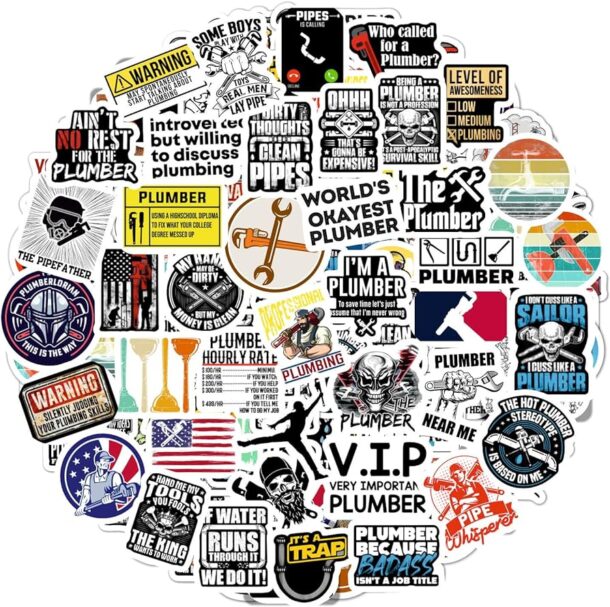
Constantly Updating Social Media
Another thing that you should be doing regularly is updating social media. Social media is your best friend because it is a free platform for you to conduct your marketing on. You can interact with your customers and potential customers, you can post a range of different content, and you can generally make your business known. Ideally, you will have an account on all of the main platforms including Instagram, X formerly known as Twitter, Facebook, and LinkedIn at the very least.
If you can come up with engaging ideas for the likes of TikTok, then go ahead. The more you can advertise here, the better your business will do.
Asking For Reviews After Completing A Project
The last thing on the list is to ask for reviews once you have completed a project for someone. If you can build up a strong business reputation and ensure that when people see your business they are loaded with positivity from past clients, this is going to be in your best interests. As such, you want to ensure that you are getting as many positive reviews as you can. Most people know that the most honest reflection of a business is going to be in their reviews, so building your business reputation this way is massively important.
Of course, if you do happen to get a negative review, then ensure that you respond calmly and ask them to get in touch so that you can help.
Hopefully you have found this article helpful in some way and now have a good idea as to some of the marketing tactics that you can use as a trade business. It’s important that you are trying to do everything that you can to make your business as enticing to customers as possible, and that means trying out new things every now and then. Sometimes things will work, sometimes they won’t, but you won’t know until you try.

Home maintenance might seem like a daunting task, especially if you’re new to it. But fear not! With a few simple tips and tricks, you can keep your home in tip-top shape without breaking a sweat. Here are five useful tips to make home maintenance a breeze. Start with a Schedule First things first, create Read more
Home maintenance might seem like a daunting task, especially if you’re new to it. But fear not! With a few simple tips and tricks, you can keep your home in tip-top shape without breaking a sweat. Here are five useful tips to make home maintenance a breeze.
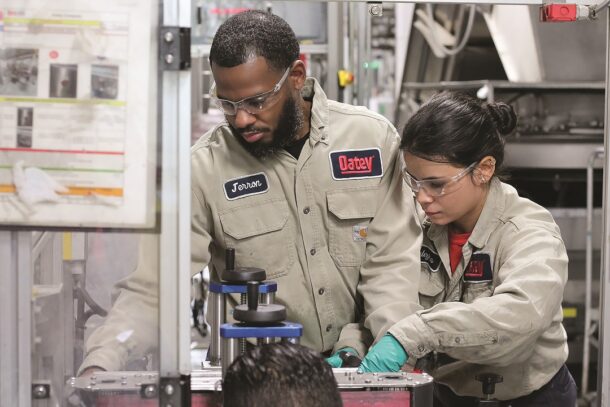
Start with a Schedule
First things first, create a maintenance schedule. This doesn’t have to be anything fancy – a simple checklist on your fridge or a digital calendar reminder will do. Monthly, seasonal, and annual tasks should all be included. For example, checking smoke detectors monthly, cleaning gutters in the fall, and servicing your HVAC system yearly. A schedule ensures that small tasks don’t slip through the cracks, leading to bigger, more expensive problems down the line.
DIY the Easy Stuff
There are plenty of small maintenance tasks that you can handle yourself without needing to call in a pro. For instance, changing air filters, unclogging drains, and touching up paint are all relatively easy jobs that can have a big impact. YouTube and home improvement blogs are great resources for step-by-step guides. However, always assess your skill level honestly – if a task seems too daunting, it’s better to call a professional than to risk making a problem worse.
Invest in the Right Tools
Having the right tools on hand can make home maintenance tasks much easier. You don’t need a massive collection, but a few essentials like a hammer, screwdriver set, pliers, a measuring tape, and a level can go a long way. And remember, quality matters more than quantity. Investing in a few durable tools now can save you money in the long run since you won’t have to replace them frequently.
Keep an Eye on Your Roof
Your roof is one of the most critical parts of your home, protecting you from the elements. Regularly inspect your roof for signs of damage like missing or loose shingles. If you live in an area with extreme weather conditions, consider upgrading to a metal roof. Not only are they incredibly durable, but they also require less maintenance. If you’re considering this option, research a reliable metal roofing supplier to ensure you get quality materials and advice.
Don’t Neglect Your Outdoor Space
Your home’s exterior and yard also need regular care. Keep an eye on landscaping to ensure it doesn’t become overgrown or encroach on your home’s foundation or roof. Regularly clean your gutters to prevent water damage, and inspect your exterior paint and siding for signs of wear. Simple steps like these can prevent costly repairs and keep your home looking great.
Remember, the key to simple home maintenance is staying proactive. By tackling tasks regularly, you can prevent small issues from becoming big problems. And, when in doubt, don’t hesitate to consult a professional. With these tips in hand, you’re well on your way to keeping your home in great shape for years to come!
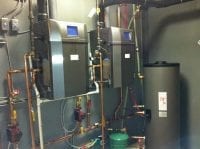
When it comes to heating systems, the world of hydronic and steam systems is like a hidden gem quietly working behind the scenes to keep us warm and cozy. Whether you are a homeowner, an installer, or just curious about efficient heating, understanding the best practices for design, installation, and maintenance can make a world Read more
When it comes to heating systems, the world of hydronic and steam systems is like a hidden gem quietly working behind the scenes to keep us warm and cozy. Whether you are a homeowner, an installer, or just curious about efficient heating, understanding the best practices for design, installation, and maintenance can make a world of difference.
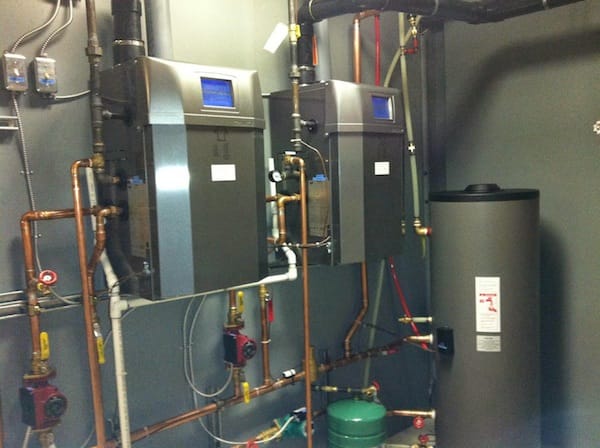
Choosing The Right Parts
Even before the design or installation, selecting the right parts is the first step. Here, you need to pick the right and reliable brand that can provide you with the right installation parts that can last longer. One such brand is Bell and Gossett. Bell and Gossett parts are high in quality and variety as well. Whether it is a heat exchanger or a wastewater pump, they have all the parts required for perfect plumbing.
Designing For Comfort
Imagine you step into your home on a chilly winter evening, and instead of a blast of cold air, you are greeted by warmth that wraps around you like a cozy blanket. That’s the magic of a well-designed hydronic or steam heating system. The key here is sizing. Consider your space, insulation, and climate. It’s like tailoring a suit – a perfect fit ensures optimal performance. Also, think about zoning. If your living room is your haven in the winter, why heat up the guest room that rarely sees any action? Zoning lets you customize the warmth where you need it.
Installation Artistry
Now, let’s talk installation. It is like putting together a complex puzzle, but instead of a picture, you get a warm and comfortable home. Quality materials are your building blocks – from pipes to radiators. Consider them the foundation of your heating masterpiece.
Take care with pipe insulation; it’s like wrapping your system in a warm hug. This not only prevents heat loss but also ensures your energy bills don’t skyrocket. And when it comes to radiators, placement matters. Proper placement ensures consistent warmth, no matter where you are.
Let’s not forget about ventilation. Proper airflow is like the breath of life for your system. It ensures efficient operation and prevents that annoying gurgling sound that can disrupt your peace and quiet.
Maintenance
Just like a car needs regular oil changes, your hydronic or steam system needs some love and care to keep working smoothly. Maintenance is the heartbeat of efficiency. Start with bleeding your radiators – it’s like giving your system a deep breath. Over time, air can get trapped, making your system work harder. By bleeding the radiators, you release that air, allowing hot water or steam to circulate freely. Check for leaks, too. Keep an eye out for damp spots or corrosion, and address any issues promptly. On top of that, water quality matters. Regularly flushing your system prevents mineral deposits that can hamper efficiency.
Troubleshooting
Sometimes, your heating system might send subtle signals that something’s amiss. Pay attention to unusual sounds – banging, hissing, or gurgling. These aren’t just random noises; they are your system’s way of saying that it needs some attention. If your radiators feel cold at the top, it’s a sign of trapped air. If you notice inconsistent heating, it is a sign that you need to perform zoning checks to maintain a balance.
Sustainability
In this day and age, it’s not just about staying warm; it’s about doing it sustainably. Upgrading to modern, energy-efficient components supercharge your system. Condensing boilers, for instance, are the superheroes of efficiency, recovering heat from the flue gases and putting it back to work. And let’s not forget about smart control. They help you use your energy precisely when and where you need it, minimizing waste.
Conclusion
In the end, embracing best practices for hydronic and steam systems is about more than warmth; it’s about creating a haven of comfort and efficiency. It ensures that your home is heated perfectly. So, here’s to the heroes behind the walls – may they keep you warm and snug for years to come.
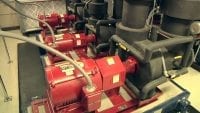
Pumps are mechanical workhorses that are essential, smoothly transporting fluids needed for many industries. This includes manufacturing, agriculture, energy, and more. Let’s learn the fundamental ideas of industrial pump technology, acting as a primer. It examines the fundamental principles, classifications, and mechanics of these devices. Types Of Pumps There are five types of industrial pumps Read more
Pumps are mechanical workhorses that are essential, smoothly transporting fluids needed for many industries. This includes manufacturing, agriculture, energy, and more.
Let’s learn the fundamental ideas of industrial pump technology, acting as a primer. It examines the fundamental principles, classifications, and mechanics of these devices.
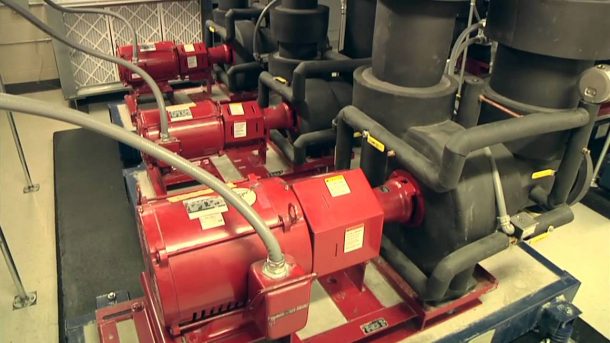
Types Of Pumps
There are five types of industrial pumps (check out Industrial Pumps Texas for more details). They are as follows:
- Centrifugal Pumps: To increase fluid velocity and pressure for uses such as water delivery, wastewater treatment, and HVAC systems, revolving impellers are used.
- Positive Displacement Pumps: Reciprocating or rotating mechanisms are utilized to transfer set amounts of fluid, making them perfect for precision applications in sectors including food processing, oil and gas, and pharmaceuticals.
- Diaphragm Pumps: These pumps are great for handling corrosive, abrasive, or viscous fluids, which are frequently found in chemical processing and sewage applications. They work by using a flexible diaphragm to create fluid movement.
- Gear Pumps: Gear Pumps are widely used in fuel transfer and hydraulic systems, and they work well with high-viscosity fluids by using revolving gears to transfer fluids by displacement.
- Peristaltic Pumps: Their gentle pumping action makes them ideal for delicate pumping tasks in food processing, labs, and pharmaceuticals. They work by using a flexible tube and rollers to generate fluid movement.
Operating Mechanisms
- Suction Phase: The suction phase starts with pump-priming, or generating low pressure, which allows fluid to enter through the suction part.
- Pressurization: It involves the pump’s operation, which uses reciprocating parts or rotating impellers to pressure or shift the fluid inside the pump.
- Pressure Generation: Pressure inside the pump rises as the pump works, giving the fluid energy and allowing it to pass through the discharge port and be used for its intended purpose.
- Fluid Movement: Propelled by the pump’s action, the pressurized or displaced fluid travels through the system, supplying vital fluid transport for a variety of industrial processes, including chemical processing, oil refining, and water supply.
Critical Components
The following crucial parts of industrial pumps are necessary to guarantee their effectiveness and functionality:
- Impellers/Rotors: In centrifugal pumps, these rotating parts give the fluid kinetic energy. This helps in raising the fluid velocity and pressure. To accommodate varied applications and flow requirements, they are available in a variety of designs.
- Casings/Housings: The components are vital for preserving pressure and preventing leaks in the pump system. They guarantee a tight seal between moving parts, guarding against fluid leaks and contamination.
- Seals And Gaskets: These components are vital for preserving pressure and preventing leaks in the pump system. They guarantee a tight seal between moving parts, guarding against fluid leaks and contamination.
- Motors or Drivers: Electric motors, engines, or turbines are examples of power sources that propel the pump‘s motion and supply the energy required for pressurization or fluid displacement.
- Bearings And Shafts: Support systems that reduce friction and guarantee smooth operation by preserving the alignment and stability of rotating parts.
Performance Parameters
The following performance metrics are essential for evaluating the efficacy and efficiency of industrial pumps:
- Flow Rate: This parameter indicates the pump’s capacity and ability to meet necessary demands by measuring the volume of fluid that passes through the pump in a given amount of time.
- Pressure: Pressure represents the force that the pump applies to the fluid; this force is essential for getting the fluid through obstacles in pipelines or other systems and to its final destination.
- Efficiency: Pump efficiency affects system reliability and operating costs. It is the ratio of input energy to output energy. In other words, it is how well the pump transforms energy into fluid power.
- Net Positive Suction Head (NPSH): NPSH shows the pressure margin that can be used to keep the pump from cavitation or creating vapor bubbles, ensuring damage-free operation.
Conclusion
To sum up, industrial pumps are vital components that power various industries in Texas and stimulate the state’s economy. It is essential to comprehend their workings, parts, and performance criteria to maximize productivity in industrial operations throughout the state.

It’s easy to assume contractors, tradesmen and craftsmen are continually found on the road, traveling from place to place, rendering their skills wherever there’s work to be found. But the larger jobs, those that require multi-year commitments or specialist equipment are often localized, and for good reason. Of course, the example of a construction site Read more
It’s easy to assume contractors, tradesmen and craftsmen are continually found on the road, traveling from place to place, rendering their skills wherever there’s work to be found. But the larger jobs, those that require multi-year commitments or specialist equipment are often localized, and for good reason.
Of course, the example of a construction site being based around the area of development is so clear and obvious it requires no further thought, but it’s also important to consider other areas of cultivation you may not have invested in just yet.
For example – is now the time for you to build a helpful commercial workshop? From this space, you could integrate the best of your craft, pick up freelance clients, and invest in equipment that you may not be able to bring with you to alternate job sites.
In this post, we’ll discuss the logistics and planning approach towards cultivating an excellent and reliable workshop, no matter your trade. Over time, this space can become the pride of your professional standing, outside your collection of satisfied and appreciative clients.
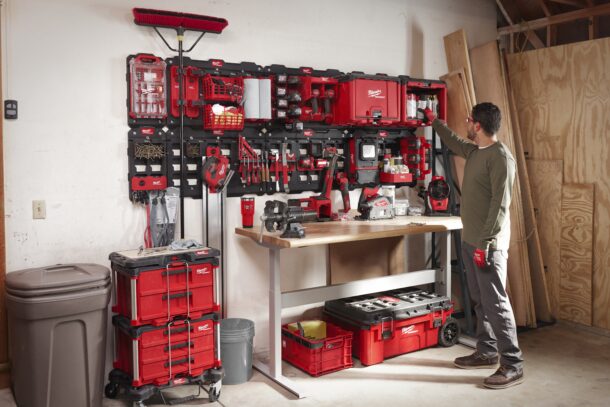
Finding Your Ideal Workshop Venue
First, your workshop needs to be situated in a reliable location that can withstand the rigors of your craft. It’s important to consider not only how you’ll use the space, but who will use it, who it will be located near, and what amenities you need to consider.
It’s also important to assess the accessibility and safety of the area (can it take a brand new clear lighting and ventilation system?) and ensure the venue aligns with the workshop’s goals – for example, if you’re using power tools then the last thing you need is local businesses complaining about noise during the day.
Of course, affordability and client-focused considerations are also worth keeping in mind. If you’re a contracting firm operating from a small office with tradies on the road, you may only need an organizational centre. If you’re a tradesman with a specific skill like a luthier, you may need to cultivate a more specific environment.
Collecting & Protecting Your Tools
The tools you use in your workshop are the backbone of all commercial activity you work on, in or out of the workshop. No tools, no revenue or productivity. Because these tools are valuable (as you no doubt realized when buying them), it’s important to establish a systematic approach to collecting and protecting these instruments to ensure smooth operations.
First, create an inventory of tools, categorize them based on functionality, and implement a storage system that facilitates easy access to the right people, and only the right people. You can Invest in durable containers and protective measures to prevent wear and tear on top of that.
Additionally, consider digital tracking where you can, like scanning systems on certain toolboxes if they’re being taken out on a job. This way, you can enhance accountability while also keeping up on repairs and making sure thefts and other difficulties are either prevented, or at the very least much less common.
Outfit Your Space Reliably
One of the most fun and interesting elements of building a workshop is outfitting the space with the functionality you need, especially regarding your chosen craft. Every element contributes to the overall functionality, and define just what you can use the space for.
For example, gantry cranes excel in handling heavy lifting tasks, adding a layer of efficiency to your workspace, especially from the loading bay inward. When outfitting your space, consider the strategic placement and integration of equipment like this and vehicle storage areas, where you’ll take in shipments and deliveries, and the production space you can control the airflow of to ensure greater control going forward.
Then comes the more specialist tools you may have to install, like installed manufacturing equipment, lathes, woodworking tools, buffering wheels and more. It’s also important to make sure this is wired correctly, and that multiple STOP buttons kill power to certain utilities in the interest of safety. You can also use shutters and door hoods to prevent dust and other debris from your workshop from leaking into the wide area.
Fire Safety Is Key
As the owner or operator of any premises, fire safety is your responsibility through and through. Take the time to craft a comprehensive safety plan by investing in quality fire extinguishers strategically placed for accessibility and use. Of course, if you’re using electrical equipment, then foam extinguishers are needed, not water.
You should also clearly mark emergency exits and conduct regular drills for a swift and organized evacuation when they really count. Practice safe storage, segregating flammable materials that may be in your workshop, and make sure you maintain an organized workspace to minimize fire hazards. Trip hazards, debris and dust, all of this can be a threat. Comrepehsnvie inspections to see these in advance is key, and so make sure you hold them regularly too.
Of course, fire alarms and other detection systems, as well as conducting regular training sessions to educate your employees is key. It’s also good to keep a constant headcount or better yet, a sign-in, sign-out system so you can more easily know when everyone is evacuated will be so much better, and may even save the life of a fire crew member. That’s how important fire safety is, especially in an environment where heavy tools are used continually.
Bonus: Make Your Presence Known!
It’s important to note that if you’re a public-facing brand, or you simply want to network with your local scene, it’s good to proudly showcase that you’re located here. Ensure you have some signage fashioned with your name and contact information, and curate a small waiting space for clients, partners, and even job candidates. It will help improve the professionalism of your workshop and allow it to become the main asset and ambassador of your brand.
With this advice, you’re certain to implement the smart logistics and cultivation of a reliable workshop. Over time, this could provide a fantastic new milestone and chapter in the life of your trade firm, no matter what discipline you’re part of.
